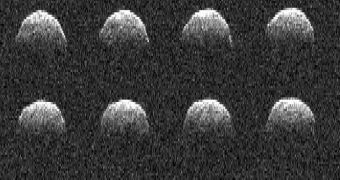Using a combination of data obtained from three separate sources, an American astronomer has recently been able to determine the mass of a near-Earth object that is targeted by an upcoming mission.
For this investigation, Steve Chesley used readings collected by the Arecibo Observatory in Puerto Rico, the NASA Spitzer Space Telescope and the Gladstone Solar System Radar, in California.
He holds an appointment with the Near-Earth Object Program Office, at the NASA Jet Propulsion Laboratory (JPL), in Pasadena, California. The expert presented his results on Sunday, May 19, at the Asteroids, Comets and Meteors 2012 meeting, held in Niigata, Japan.
The investigation was focused on the asteroid 1999 RQ36, which is targeted by NASA with the Origins, Spectral Interpretation, Resource Identification, Security, Regolith Explorer (OSIRIS-Rex) mission. The spacecraft is currently scheduled to launch in 2016.
One of the most important things that the astronomer needed to figure out at first was by how much the asteroid deviates from its originally calculated orbit. In addition, the computer model he developed also took into account a large number of factors that might have an influence on the space rock's orbit.
Chesley's model revealed that 1999 RQ36 has deviated from its anticipated path by about 160 kilometers (100 miles) in the 12 years since it was discovered. This difference can be accounted for by the Yarkovsky effect, which occurs when asteroids generate a very small propulsive force.
“At its peak, when the asteroid is nearest the sun, the Yarkovsky force on 1999 RQ36 is only about a half ounce – around the weight of three grapes,” the expert told colleagues attending the meeting.
“When you're talking about the force of three grapes pushing something with a mass of millions of tons, it takes a lot of high-precision measurements over a long time to see any orbital changes,” Chesley revealed.
“Fortunately, the Arecibo Observatory provided a dozen years of great radar data, and we were able to see it,” he went on to say. The distance between the Arecibo Observatory and 1999 RQ36 was measured with an accuracy of 300 meters, though the object was 30 million kilometers away.
The space rock was found to be about 500 meters across, and to weigh in excess of 60 million metric tons. What this implies is that the space rock actually has the density of water. Chesley described it as a “very porous jumble of rocks and dust.”

 14 DAY TRIAL //
14 DAY TRIAL //